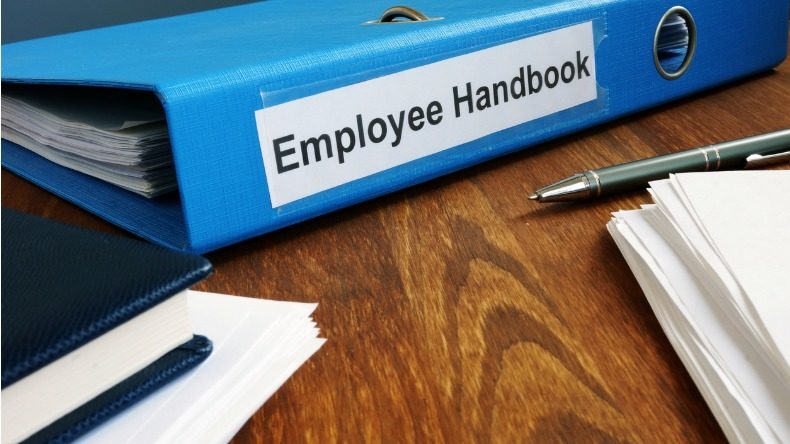Employee handbooks are not required in California, but they are often the most effective ways for employers to communicate specific federal, state, and local policies. A handbook remains the best way for employers to clearly communicate their policies relating to employment.
Creating an employee handbook can be necessary for some employers in California because it only helps them comply with complex federal and state regulations, but also ensures fair and consistent treatment of employees and helps avoid any misunderstandings that may potentially lead to lawsuits. A handbook also serves an important purpose by providing guidance to new employees, educating supervisors and managers, and otherwise establishing legal protections.
Here is everything you will need to include in an employee handbook:
Introduction
Your handbook should begin with a welcome note that also explains that the handbook is not an employment contract. Make sure to establish that employees will be “at will,” meaning they can quit or be fired for any reason at any time.
Workplace Commitments
Stress that an employer is an equal opportunity employer. Use this section to express that a company will not tolerate any discrimination against protected characteristics, and also establish penalties for offensive or inappropriate behavior.
Company Policies
This section can lay out an equal employment opportunity and anti-discrimination policy, disability accommodations policy, anti-harassment policy, anti-retaliation policy, harassment, discrimination, and retaliation prevention policy, and religious accommodations policy. Also discuss any dress code, policies regarding the use of company property, privacy rules, drug use, and social media, as well as disciplinary actions for violations.
Employment Classification
The National Federation of Independent Business (NFIB) says that a section on employment classification and overtime rules is necessary. Consider adding a payroll practices and compensation policy, workday and workweek notice, notice of paydays, employee referral policy, and make-up time policy.
Attendance
Explain a company’s work hours, attendance requirements, and policies concerning punctuality or absenteeism. In addition to the Attendance Policy, this section can also include a Meal and Rest Periods Policy, Bring Your Own Device to Work (BYOD) Policy, Lactation Break Policy, Dress Code and Grooming Policy, Performance Review Policy, Code of Ethics or Conflict of Interest Policy, Outside Employment Policy, Flexible Work Schedule Policy, Romance in the Workplace Policy, Nepotism Policy, and Personnel File Access Policy.
Leave Policies
Leave could be required by federal, state, or local law, and leave, vacation, and time off policies should include eligibility details. You will want to discuss your vacation policy, paid sick leave policy, california family rights act (cfra) and pregnancy disability leave combined policy, pregnancy disability leave policy, jury duty leave policy, military service leave policy, witness and victims of crime leave policy, bereavement leave policy, and bone marrow, organ, and blood donation leave policy.
Work Performance
Explain how employers evaluate employee performances and also state employer expectations.
Discipline
Explain what will be grounds for disciplinary action and explain the procedures that the company will use in employee discipline. Mention verbal or written warnings, probation, suspension, demotion, and discharge.
Employee Health and Safety
You will want to include a section outlining procedures for workplace emergencies, safety, and security. This should include a Health and Safety in the Workplace Policy, Drug Testing in the Workplace Policy, Heat Illness Prevention Policy, Smoke-Free Workplace Policy, and Employee Face Covering Policy.
Employee Benefits
This section should outline all of the benefits employees are eligible for. Benefits may include health insurance, retirement plan, or disability coverage.
Termination Policies
Employers should spell out that they expect employees to provide two weeks notice when they are resigning. This section should also outline how company property should be returned or handled.
Acknowledgment
The end of the handbook is usually the employee’s recognition that they received, read, and understood the handbook.
Contact Our Mountain View Startup & Small Business Attorney
If you need help creating an employee handbook for your business, do not wait to get legal help. Kalia Law P.C. understands how stressful these kinds of situations can be for employers, but we help companies throughout California accomplish their goals.
Our firm understands all of the complexities involved in running a business right now. You can call (650) 701-7617 or contact us online to schedule a free consultation with our Mountain View startup & small business attorney.



0 Comments